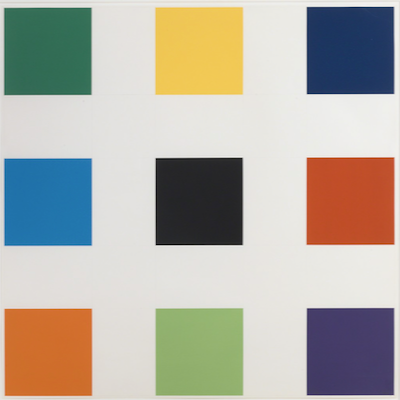
Details
Artist
Styles
Published by Atelier Duval - Suite: Vancouver // Lum by Victor Vasarely, created in 1982, is a limited edition lithograph that exemplifies the artist's mastery of geometric abstraction and optical illusion. Measuring 75 x 75 cm, the print showcases a dynamic grid pattern divided diagonally into two contrasting sections. The upper portion features cool blue and green hues, while the lower section contrasts with warm pink and orange tones. The interplay of colors and the meticulous grid structure create a sense of depth and movement, drawing the viewer’s eye through the composition in a rhythmic pattern. Published by Atelier Duval as part of the Vancouver suite, this work reflects Vasarely's pioneering role in the Op Art movement, where he manipulates shapes and colors to create mesmerizing visual effects.
Lum, 1982
form
Medium
Size
75 x 75 cm
- Inches
- Centimeters
Edition
Price
- USD
- EUR
- GBP
Details
Artist
Styles
Published by Atelier Duval - Suite: Vancouver // Lum by Victor Vasarely, created in 1982, is a limited edition lithograph that exemplifies the artist's mastery of geometric abstraction and optical illusion. Measuring 75 x 75 cm, the print showcases a dynamic grid pattern divided diagonally into two contrasting sections. The upper portion features cool blue and green hues, while the lower section contrasts with warm pink and orange tones. The interplay of colors and the meticulous grid structure create a sense of depth and movement, drawing the viewer’s eye through the composition in a rhythmic pattern. Published by Atelier Duval as part of the Vancouver suite, this work reflects Vasarely's pioneering role in the Op Art movement, where he manipulates shapes and colors to create mesmerizing visual effects.
- Recently Added
- Price (low-high )
- Price (high-low )
- Year (low-high )
- Year (high-low )
What is Hard Edge Art?
Hard Edge art is a style of abstract painting that became popular in the 1960s. It features areas of color separated by crisp, sharp edges that are painted with geometric precision. The term hard-edge painting was coined by art critic Jules Langsner to describe this approach, which contrasts with the softer, more fluid forms of other abstract styles.






































































